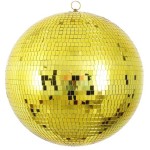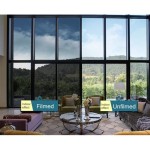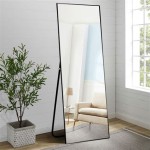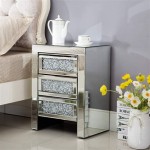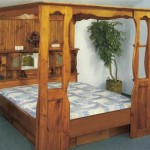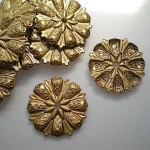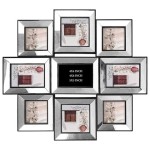Antique Wall Mirrors: Decorative and Reflective History
Antique wall mirrors offer more than just a reflection; they provide a glimpse into the past, adding a touch of history and elegance to any space. These decorative pieces can transform a room, serving as both functional objects and captivating works of art. Understanding the nuances of antique mirrors, from their construction to their stylistic variations, allows for informed collecting and decorating choices.
Key Points about Antique Wall Mirrors
- Reflect light and visually expand spaces.
- Serve as decorative focal points.
- Offer insights into historical design trends.
The history of wall mirrors is intertwined with the development of glassmaking and mirroring techniques. Early mirrors were often small and made from polished metal, such as bronze or silver. The development of glassblowing allowed for larger mirrors, but the reflective surface was still created using metal backing, often mercury or tin. This process created the characteristic antique silvering often seen in older mirrors, which can exhibit signs of age and wear, adding to their unique charm.
Key Points about Mirror Construction
- Early mirrors utilized polished metal.
- Glassblowing enabled the creation of larger mirrors.
- Metal backing, like mercury or tin, provided reflectivity.
- Antique silvering contributes to a mirror's character.
The styles of antique wall mirrors are as diverse as the periods they represent. From the ornate and gilded frames of the Baroque and Rococo periods to the simpler, more geometric designs of the Art Deco era, each style reflects the prevailing aesthetic of its time. Victorian mirrors often featured elaborate carvings and bevelled edges, while Art Nouveau mirrors incorporated flowing lines and natural motifs. Identifying these stylistic elements can help determine the age and origin of a mirror.
Key Points about Mirror Styles
- Baroque and Rococo: Ornate and gilded frames.
- Art Deco: Geometric designs.
- Victorian: Elaborate carvings and bevelled edges.
- Art Nouveau: Flowing lines and natural motifs.
The size and shape of an antique wall mirror contribute significantly to its decorative impact. Large, overmantel mirrors can create a grand statement in a living room or dining room, while smaller, more intricately framed mirrors can add a touch of elegance to a hallway or bedroom. The shape of the mirror itself, whether rectangular, oval, or round, also influences its aesthetic. Some antique mirrors even feature unusual or asymmetrical shapes, further enhancing their unique character.
Key Points about Size and Shape
- Large mirrors create grand statements.
- Smaller mirrors offer subtle elegance.
- Shape contributes to the overall aesthetic.
- Unusual shapes enhance uniqueness.
Caring for antique wall mirrors requires specific considerations to preserve their delicate beauty. Cleaning should be done with gentle, non-abrasive materials to avoid damaging the antique silvering. Excessive moisture and direct sunlight should be avoided as they can accelerate deterioration. Proper hanging techniques are also essential to ensure the mirror's stability and prevent damage to the frame or glass.
Key Points about Mirror Care
- Clean with gentle, non-abrasive materials.
- Avoid excessive moisture and direct sunlight.
- Utilize proper hanging techniques.
The value of an antique wall mirror is determined by several factors, including its age, condition, rarity, and stylistic significance. Mirrors from well-known makers or with documented provenance can command higher prices. Condition plays a crucial role, with mirrors exhibiting minimal damage or restoration generally being more valuable. Understanding these factors can assist in assessing the worth of an antique mirror.
Key Points about Mirror Value
- Age, condition, rarity, and style influence value.
- Mirrors from renowned makers are highly sought after.
- Documented provenance increases value.
- Condition significantly impacts worth.
Incorporating antique wall mirrors into a modern interior design scheme can add depth and character. These pieces can serve as a focal point, complementing existing furniture and decor. The reflective qualities of mirrors can also enhance the brightness and perceived size of a room, making them a practical and aesthetically pleasing addition to any space.
Key Points about Incorporating Antique Mirrors in Modern Interiors
- Add depth and character to modern spaces.
- Serve as captivating focal points.
- Enhance brightness and perceived room size.
The acquisition of antique wall mirrors can be a rewarding pursuit. Antique shops, auctions, and online marketplaces offer a wide array of options. Careful examination of the mirror's condition and authenticity is crucial before making a purchase. Researching different styles and periods can also help collectors find pieces that resonate with their personal taste and decorating goals.
Key Points about Acquiring Antique Mirrors
- Explore antique shops, auctions, and online marketplaces.
- Carefully examine condition and authenticity.
- Research styles and periods to inform purchasing decisions.

Queenship Decorative Gold Antique Oval Wall Mirror Ornate

Noble House Devries 36 In X 58 Classic Rectangle Framed Decorative Mirror Antique Gold Over The Mantle 106182 Home Depot

Decorative Wall Mirrors For Any Space House Decoration Ideas Antique Mirror Decor Living Room

Champagne Ornate French Decorative Wall Mirror 108cm X 78cm Hong Kong

Large Antique Framed Mirror Decorative Wall Decor China Made In Com

Shyfoy Antique Wall Mirror Gold Baroque Ornate Decorative Arche Mirrors For Entryway Bathroom Powder Room Traditional Elegant Old 31 5

Antique French Style Wall Mirror Decorative Bevelled Gold Shabby Chic Mirrors

Decorative Wall Mirror Antique French Style Ornate Gold Mirrors

Antique Wall Mirror Shape Rectangular

Decorative Wall Mirror Vintage Hanging Mirrors For Bedroom

